Raquel Gómez León, neuropsychologist at the Abriendo Puertas Association, shares the association’s experience using NeuronUP as a cognitive stimulation and rehabilitation tool and two examples of real sessions with its users.
About the Abriendo Puertas Association
The Abriendo Puertas Association is a non-profit association that was founded in 1996 thanks to a group of parents from the town of Moguer in the province of Huelva, who sought to offer their children and family members with disabilities the necessary services to improve their quality of life.
Since then, the association has expanded its services, serving children from an early age up to older adults.
Professional team of the Abriendo Puertas Association
We currently have the following professional profiles:
- Manager.
- Day center director.
- Social workers.
- Clinical psychologists.
- Psychologist specialized in neuropsychology.
- Speech therapists.
- Physiotherapist.
- Special education teachers.
- Pedagogues.
- Occupational monitors.
- Driver.
- Administrative staff.
Services provided by the Abriendo Puertas Association
Early Intervention Center (CAIT)
Our association has a service of early intervention for children between 0 and 6 years old who present difficulties or delays in development. Its objective is to attend to the developmental needs of these children, promoting their optimal and comprehensive development, and to provide support and guidance to families.
In this service we have the necessary professionals to meet the needs of the users: physiotherapist, speech therapists, psychologists and therapeutic pedagogues.
Educare
This service aims to respond to children and young people between 6 and 21 years old with special educational needs, whether or not they have a disability.
Speech Therapy
This service attends to children from 3 years old who present language difficulties or delays in acquisition, and in communication.
Psychology
The psychology service is available to people of any age, whether or not they have a disability. This service provides psychological support, cognitive stimulation, behavior modification, as well as rehabilitation and neuropsychological stimulation, among others.
ASD Classroom
Specialized service for children over 3 years old with mild-moderate autism, whose purpose is to promote their autonomy in basic activities of daily living (ADLs).
Occupational Day Center
This center serves people with disabilities over 21 years old. We have both private places and places contracted by the Junta de Andalucía. The objective of the center is to promote autonomy and social inclusion of people with disabilities, providing them with training resources, social skills, promoting the performance of activities of daily living (ADLs) and offering support and advice to families.
The main difference between private and contracted places is that the latter have hours from 9:00 a.m. to 5:00 p.m., so they have breakfast and lunch at the center, while private places have hours from 9:00 a.m. to 1:00 p.m.
Special Employment Center (CEE)
Our workforce is made up of people with intellectual, motor and/or sensory disabilities. In this CEE we carry out the handling of plastic fruit containers, label these containers and perform parcel and mail distribution and shipping.
Placement Agency
We are an instrument of both the State Public Employment Service and the Andalusian Employment Service; therefore we specialize in responding to people with disabilities in the province of Huelva who want to enter the workforce.

Subscribe
to our
Newsletter
Profile and pathologies of the users of the Abriendo Puertas Association
Our users present a very heterogeneous profile. While the Early Intervention Center (CAIT) serves children between 0 and 6 years old with some developmental alert, the Educare and Speech Therapy services serve children with special educational and language needs, whether or not they have a diagnosis.
For the Psychology service there is also no specific profile; any person who requests it can access it.
It is in the Occupational Day Center, the Special Employment Center (CEE) and the Placement Agency services where we have a single inclusion criterion, which is that the person must have a recognized disability, and they may or may not have another condition. Some examples are: autism, schizophrenia, Down syndrome, Prader-Willi syndrome, etc.
NeuronUP at Abriendo Puertas
NeuronUP is a tool the association has had for two years. This rehabilitation and stimulation platform has facilitated the work with the people we serve both in the Educare, Speech Therapy and Psychology services, as well as in the Day Center and the Occupational Center.
The main advantage of this tool is its electronic, game-like format, which motivates our users to carry out tasks using tablets.
But it also has other advantages:
- Allows registration of users and their medical history.
- Allows scheduling sessions in advance.
- It is possible to adjust the task complexity, adapting it to each person.
- Results are recorded while the user works, allowing the professional to pay attention to other aspects of the session.
- Allows both stimulation and rehabilitation.
Since implementing NeuronUP we observe greater willingness of our users to work, and we have observed improvements in their cognitive functions, such as attention or memory.
Examples of NeuronUP sessions
At our association, NeuronUP is used with both children and adults and older people.
Below we present two different success cases from our work with NeuronUP: the first is a session with an adult with intellectual disability, and the second a session with a child with adrenoleukodystrophy.
Example of a NeuronUP session for intellectual disability
One example of how we’ve used this tool is the case of a 36-year-old adult with intellectual disability who required neuropsychological rehabilitation after drug-resistant right medial temporal epilepsy (EMT) surgery.
This rehabilitation was carried out in coordination with a neuropsychologist from the private hospital where the operation was performed. While we were in charge of the intervention, the user from our service was evaluated at the private center where the operation had been performed by both his doctor and his neuropsychologist.
For this case a bottom-up mechanism was proposed, and a program of function restoration and retraining was established, so that the repetitive practice of designed exercises sought to strengthen some basic processes (attention, memory, executive functions, etc.) (Sohlberg and Mateer, 2021; Mateer, Sohlberg and Youngman, 1990).
This theoretical basis is grounded in the conception that stimulation of the different components of cognitive processes will lead to better processing and automatization of those processes (Anderson, Winocur and Palmer, 2003).
Intervention plan design
It consisted of two weekly sessions of 45-50 minutes each. Different cognitive functions were worked on in each session, although NeuronUP sessions always began with sustained attention stimulation.
This first weekly session to work with this person with an intellectual disability consisted of the following NeuronUP activities:
In the case of the second weekly session, we worked with these other NeuronUP activities:
Example of a NeuronUP session for adrenoleukodystrophy
As I mentioned earlier, we also use NeuronUP in the association to work with children on cognitive stimulation to improve their school and social skills.
An example of this is the case of a child under 10 years old diagnosed with X-linked adrenoleukodystrophy. This user attends our association 3 times a week to receive sessions of psychology, speech therapy and pedagogical re-education. NeuronUP is used in all sessions.
In this case the objective, given the characteristics of his diagnosis, is to maintain and/or improve his cognitive functioning.
This is an example of the sessions that are carried out with him.
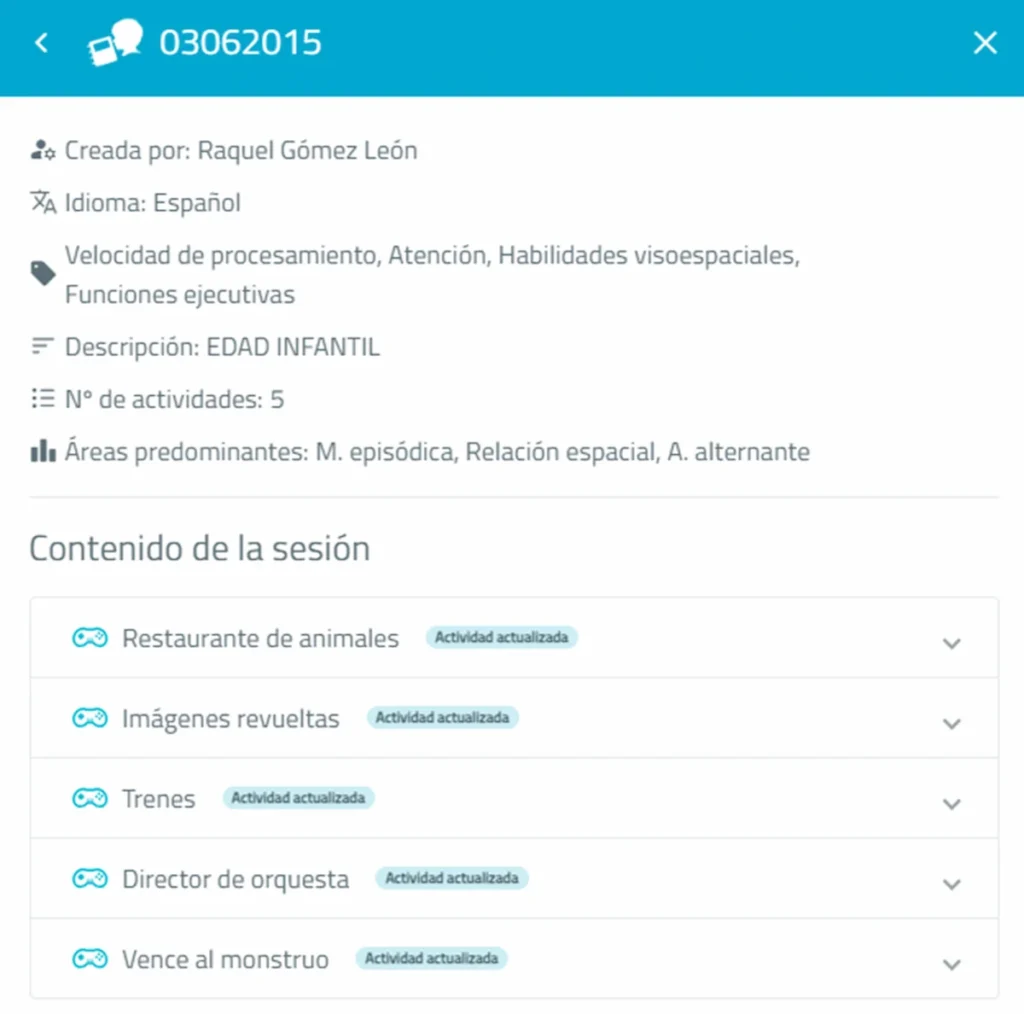
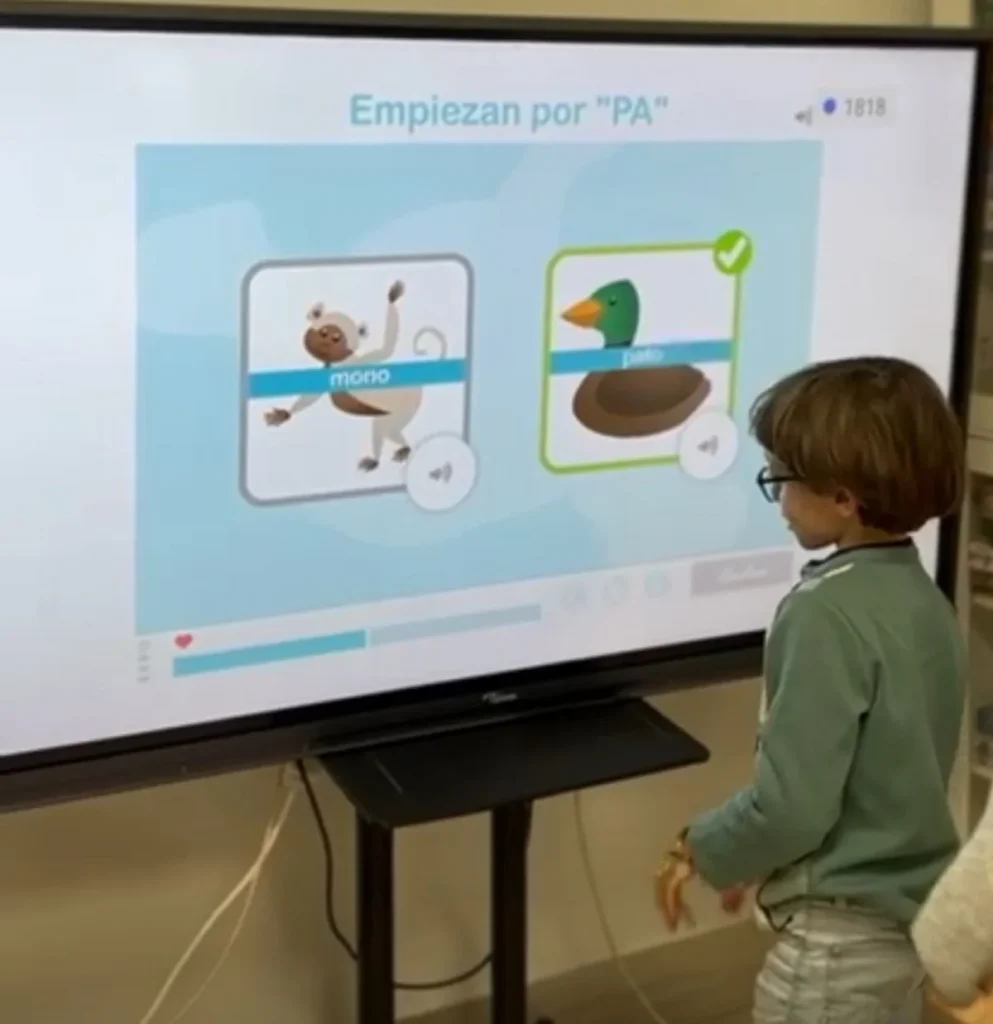
Below is the overall graph of his cognitive performance over the last two years during which he has been treated using the NeuronUP tool.
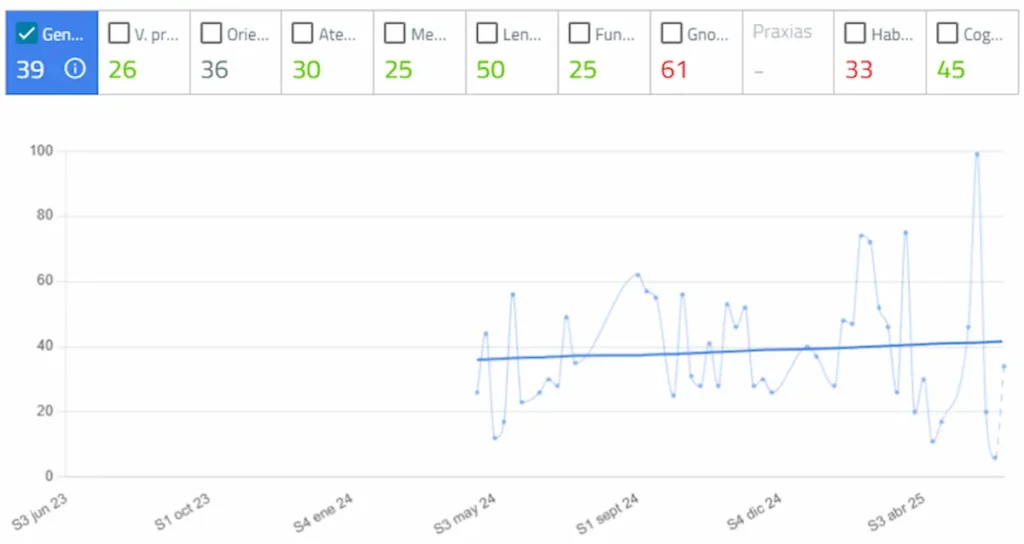
As we can observe, it shows a positive trend in his cognitive performance compared to the start of the sessions with NeuronUP a year ago.
Conclusion
NeuronUP is a useful tool for both children and adults, presented in an attractive format to motivate users to work with it. In addition, it can be used for both rehabilitation as well as for cognitive stimulation. Therefore, it is a tool that adapts to the user’s needs.
For our association it has meant an improvement in the care of our users since they present very heterogeneous characteristics and needs. It allows us almost immediate feedback on our users’ performance and their progress.
Bibliography
- Anderson, N.D., Winocur, G., and Palmer, H. (2023).Principles of cognitive rehabilitation. In P.W. Halligan, U. Kischka and J.c. Marsahall (Eds.), Handbook of clinical neuropsychology (pp. 48-69). Oxford: Oxford University Press.
- Mateer,C.A., Sohlberg, M.M., and Ypungman, P. (1990). The management of acquired attention and memory disordes following mild closed head injury. In R. Wood (Ed.), Cognitive rehabilitation in perspective (pp. 68-95). London: Taylor and Francis.
- Sohlberg, M. M. and Mateer, C.A. (2001). Cognitive Rehabilitastion. An integrative neuropsychology approach. New York: Guildford Press.
If you liked this blog post about how the Abriendo Puertas Association works with NeuronUP, you may be interested in these NeuronUP articles:
“This article has been translated. Link to the original article in Spanish:”
Así trabaja la Asociación Abriendo Puertas con NeuronUP: sesiones prácticas para niños y adultos
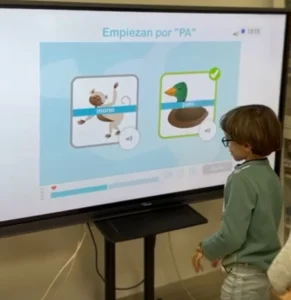



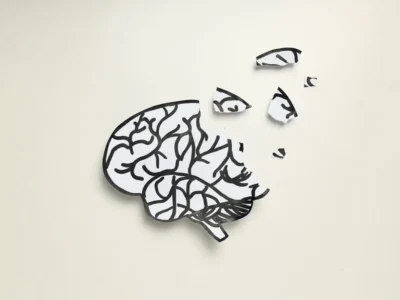

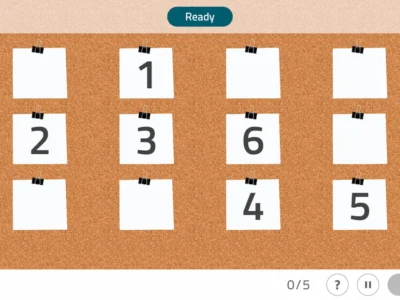
 How NeuronUP Transforms Pediatric Cognitive Rehabilitation: Isabel Corbacho’s Success Story
How NeuronUP Transforms Pediatric Cognitive Rehabilitation: Isabel Corbacho’s Success Story
Leave a Reply